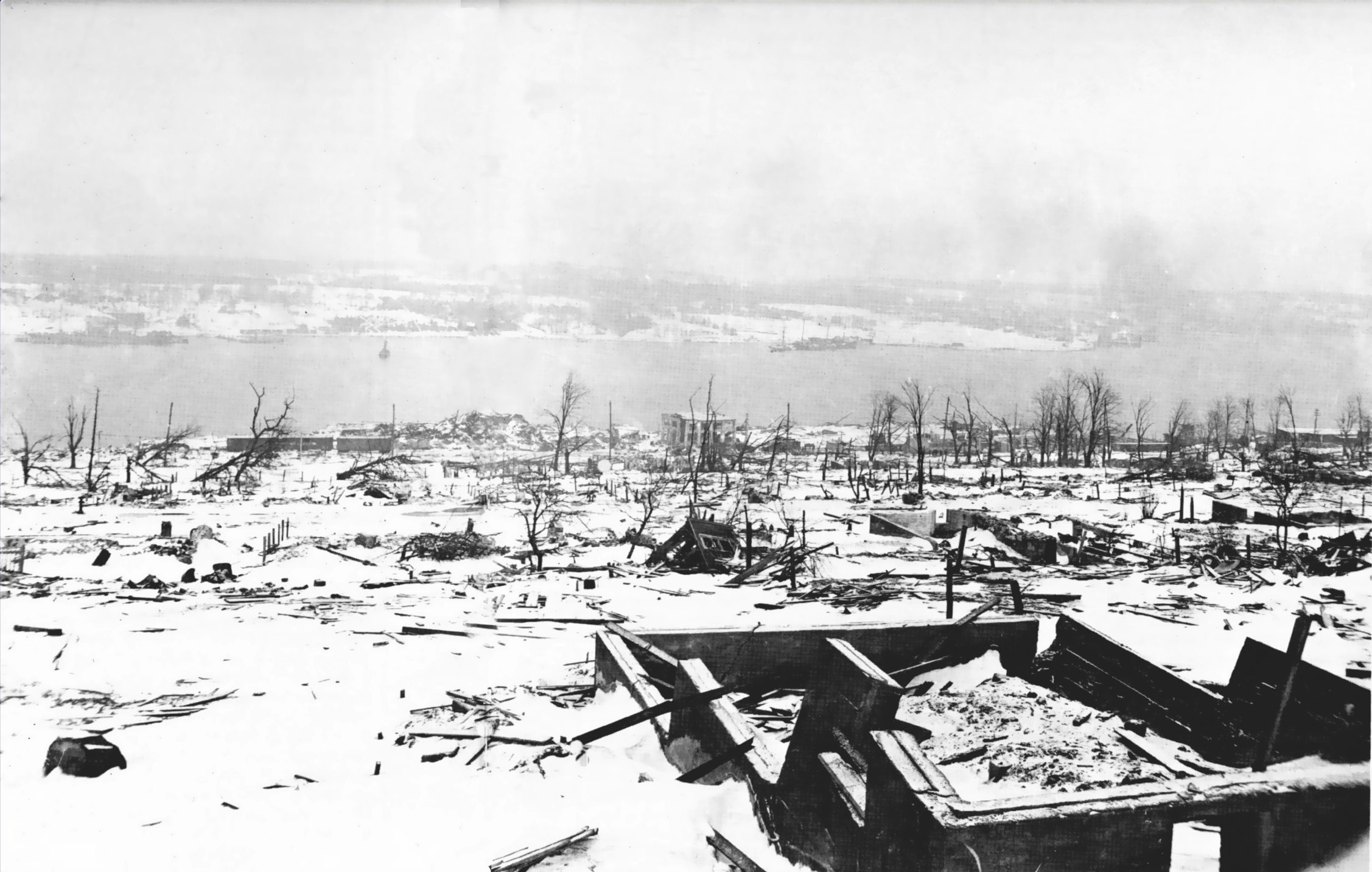Last week, the city of Boston celebrated the lighting of a 53-foot white spruce tree — an annual gift from Nova Scotia, and a sign of a friendship that began 100 years ago this year.
Did you know that Mass. Eye and Ear has a special connection to this tradition?

The tree is a poignant reminder of a deadly explosion that occurred in Halifax, Nova Scotia on December 6, 1917. What began as a minor ship collision sparked a horrific fire, setting off a chain of events that claimed nearly 2,000 lives.
The event also sparked an immediate heroic response from the Boston and Halifax medical communities, and many experts suggest that this particular event served as a catalyst for modern day trauma medicine and disaster response.
From Boston to Halifax
On the day of the explosion, communication in and out of Halifax was completely destroyed following the blast. When the fire began, a courageous telegraph operator sent out the last telegram, saying that a terrible explosion was imminent and that help was going to be desperately needed.
When the news reached Massachusetts, the people of Boston immediately mobilized — organizing doctors, nurses and a portable hospital on that same day. The team set out by train in the middle of a blizzard to help.

Eye Injuries Abound
What the first Boston team found on arrival in Halifax was astonishing — thousands with severe burns, blast traumas, psychological traumas and injuries from flying debris. People were without shelter and a blizzard had dumped more than a foot of snow on the devastated city.
Eye and facial injuries were common. Many people in Halifax were staring out their windows, mesmerized by the sight of the burning ship in the harbor, and were struck by shattered glass at the time of the explosion. Nearly 600 people sustained eye-related injuries that day. One hundred and fifty lost one eye, and 41 were left blind in both eyes.
Because of these injuries, today, ophthalmologists are able to save more eyes and more vision after trauma and injuries like those sustained in the Halifax explosion.
“Learning how to deploy resources and get patients to the right place is something that we continue to learn and work on today,” said Dr. Joan Miller, Chief of Ophthalmology at Mass. Eye and Ear.
To learn more about the relationship between the medical communities of Boston and Halifax, visit a special exhibit at the Mass General Russell Museum of Medical History and Innovation. The exhibit will be open through February.




Thank you for the article.